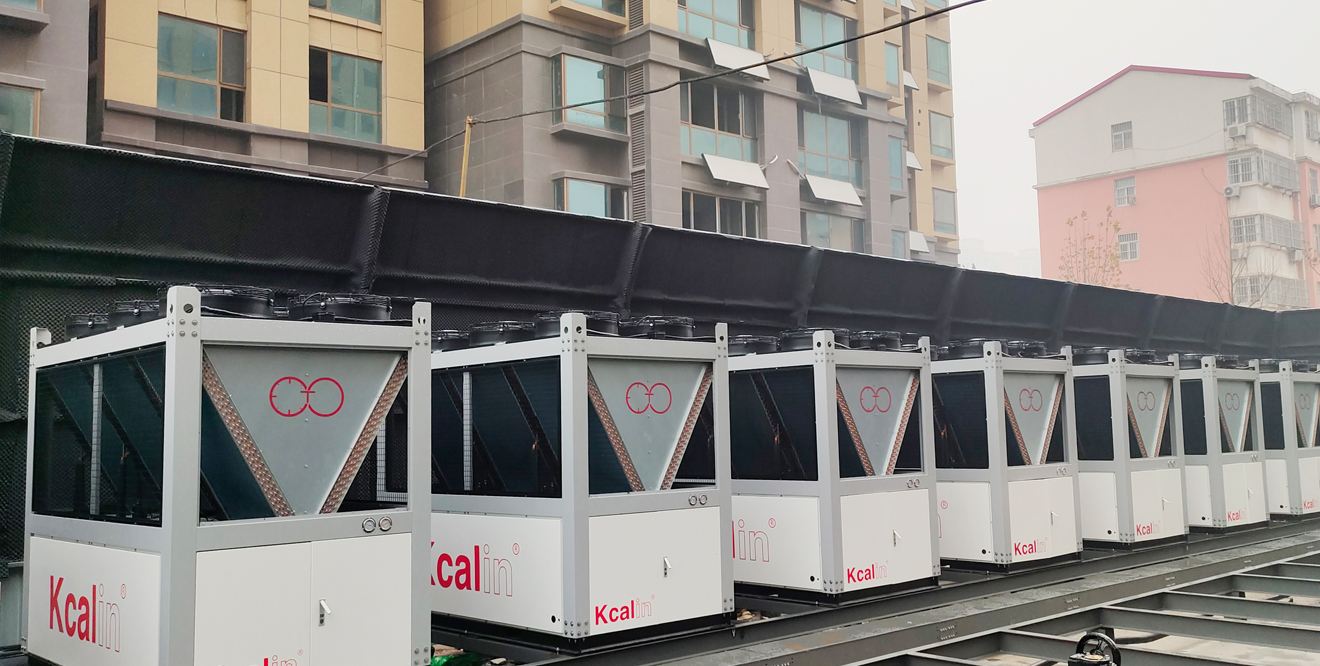Traditional heating methods such as coal and gas heating are not only harmful to the environment, but also have problems such as high operating costs and multiple safety hazards. In recent years, air source heat pumps have gradually become a new favorite for winter heating due to their advantages of high efficiency, energy conservation, environmental protection, and low-carbon.
Air source heat pump is a type of equipment that utilizes the low-temperature heat energy in the air and raises it to the appropriate temperature through a heat pump cycle system to meet heating needs. Its working principle is the reverse Carnot cycle, which transfers and enhances heat through main components such as compressors, evaporators, condensers, and expansion valves. The specific work process is as follows:
Evaporation: The heat in the air is absorbed by the evaporator, causing the low-temperature refrigerant to evaporate into a gaseous state. This process transfers heat energy from the air to the refrigerant.
Compression: The gaseous refrigerant is compressed by the compressor, causing the temperature and pressure to increase and become a high-temperature and high-pressure gas.

Condensation: High temperature and high pressure refrigerant gas enters the condenser, exchanges heat with the air or water that needs to be heated, releases heat, and the refrigerant condenses again into a liquid state.
Throttling: The liquid refrigerant is throttled and depressurized through an expansion valve, resulting in a decrease in temperature and entering the evaporator for further evaporation, completing a cycle.
The advantages of air source heat pumps
Efficient and energy-saving: Air source heat pumps utilize the low-temperature heat energy in the air for heat transfer, and the energy efficiency ratio (COP) can usually reach 3-4, which means that every 1 kWh of electricity consumed can generate 3-4 times more heat. Compared to traditional electric heating equipment, its energy efficiency has been significantly improved, reducing energy consumption.
Environmental protection and low-carbon: Due to the fact that air source heat pumps are mainly driven by electricity and do not require the combustion of fossil fuels, they do not produce harmful gases such as carbon dioxide, sulfur oxides, and nitrogen oxides during operation, reducing environmental pollution and helping to achieve carbon neutrality goals.
Safe and reliable: Compared to coal-fired and gas heating, air source heat pumps do not have combustion and emission problems, reducing safety hazards such as fire and poisoning. Its operation is stable and reliable, with minimal maintenance requirements and a long service life.
Widely applicable: Air source heat pumps are suitable for various environments and application scenarios, whether it is residential, commercial buildings, or industrial plants, they can provide efficient heating solutions. Especially in areas where the temperature is not too low, its effect is particularly evident.
As an efficient, energy-saving, environmentally friendly, and low-carbon heating solution, air source heat pumps have gradually become the market choice due to their excellent performance in winter heating. Its characteristics of high efficiency, energy conservation, environmental protection, low-carbon, safety, reliability, and wide applicability have made it widely used in residential, commercial buildings, and industrial plants.
Air source heat pumps not only provide stable and comfortable heating services, but also reduce operating costs and improve the quality of life and production for users. In the future, with the continuous progress of technology and the gradual maturity of the market, air source heat pumps will play an important role in more fields and contribute to achieving energy conservation and emission reduction goals.







Comment